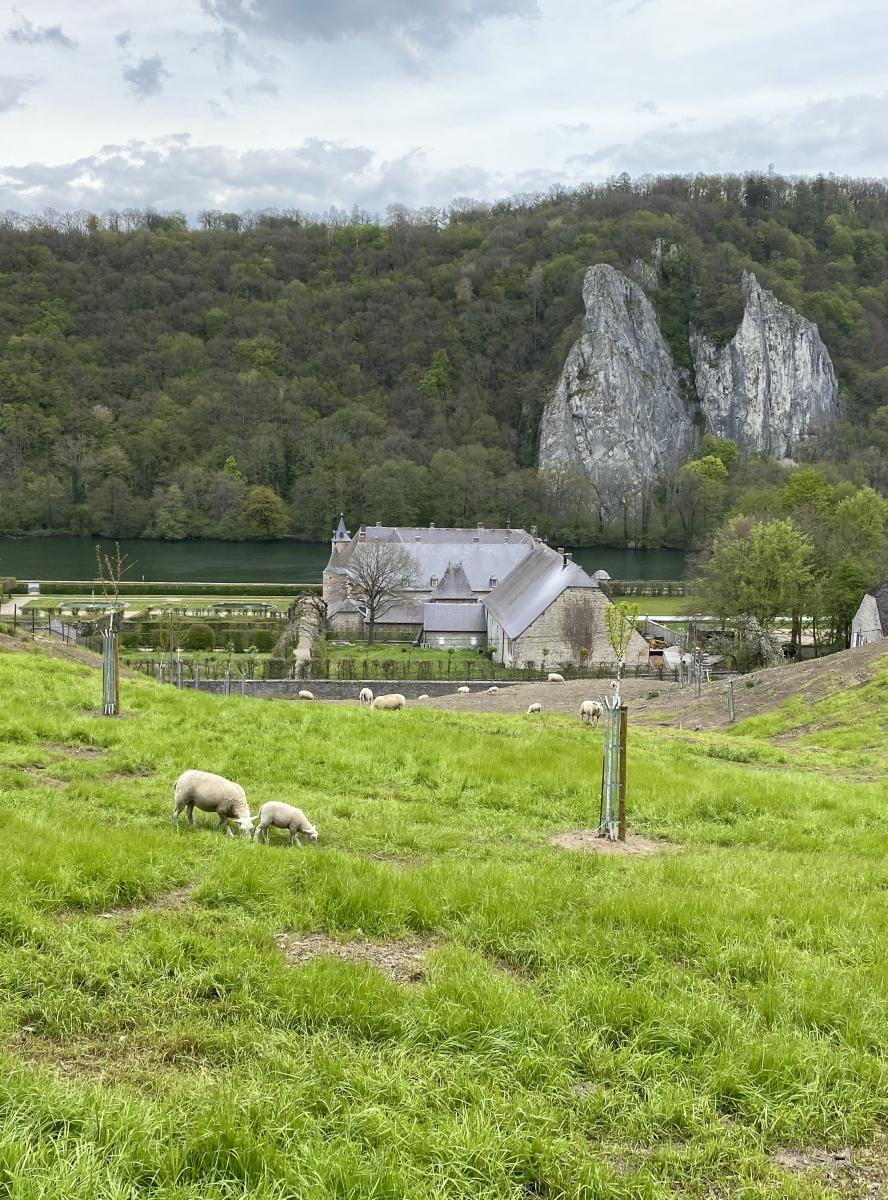The Domaine de Freÿr: exemplary heritage and environmental restoration

Ensuring the future of one of the most beautiful sites in Wallonia, whilst also reducing its environmental footprint, was the ambitious objective of the project ‘Château Zero Emissions’. This project was launched in 2012 by the Domaine de Freÿr non-profit association, with support from the Laubespin Lagarde Fund, managed by the King Baudouin Foundation. After almost 10 years of research, studies and works, the buildings have been restored, their energy performance improved and their wastewater purified. The surrounding landscapes are gradually regaining their authenticity, thanks to a return to meadow orchards. It has been a unique restoration project, combining architectural heritage, ecology and the local economy.
It is rare, in a restoration project, to manage to reconcile heritage and environmental objectives. This was, nevertheless, the challenge set by the asbl Domaine de Freÿr as it embarked on ensuring the future of this exceptional estate, listed as Major Walloon Heritage, in a spirit of sustainable development. It was an objective that arose from discussions initiated by the Laubespin Lagarde Fund, which has precisely as its objective to support the conservation, restoration and promotion of the Domaine de Freÿr, one of the tourist jewels of the Upper Meuse region of Belgium.
The originality of this vast restoration project lies in its holistic approach. Here, architectural heritage is not considered in isolation; instead the entire site (the château, but also its gardens and the surrounding land) is taken into consideration. Between 2017 and 2021, large-scale works involving various aspects of the estate were undertaken, implying the collaboration of a number of actors, thanks to support from the Laubespin Lagarde Fund and the Walloon public services (Agence wallonne du Patrimoine and Programme wallon de Développement rural), amounting to a total of nearly 1.5 million euros.
‘Château Zero Emissions’
In order to reduce the estate’s CO2 emissions, the old oil-fired boilers were replaced by high-performance wood-chip boilers, which provide heating for the entire château (covering an area of some 4,000 m²). A ‘short circuit’ approach was privileged: the wood-chips used for the boiler are the result of tree maintenance on the estate (forestry surpluses). A particulate filter reduces emissions, which contributes to lowering the castle’s environmental footprint. In the same spirit, a water purification plant has been installed to treat wastewater from the castle.
Elsewhere, the roofs, building frameworks, façade claddings and other joinery in the castle buildings that had suffered from the passing of the years were restored using ancestral artisanal techniques. “We limited our interventions to the strict minimum in order not to alter what had originally been built” explains Bertrand Dierckx, the architect commissioned with the restoration of the estate. “Here too, we privileged the short circuit, working with local businesses and local crafts people. We stuck to the same people throughout the work, which is extremely important if you wish to ensure the quality and respect for the work undertaken.”
The meadow orchard: a real asset for biodiversity
In parallel to work on the château, a landscape assessment was conducted using historical documents (notably old photos and postcards). “The research revealed that the hillside - wooded for decades - was originally orchards of standard fruit trees” says Denis Miraillé, landscape engineer. “We wanted to regain the semi-open character of this space by replacing the wood with a meadow orchard. Its ‘natural’ maintenance is assured by some twenty sheep belonging to a local breeder.”
After the felling and removal of the trees and grubbing, the land concerned was re-seeded in an effort to control the plant composition and then re-planted with standard fruit trees: apple, pear, plum and cherry trees. “This ‘re-conquest’ of the landscape is accompanied by diversification of the estate’s economy: the fruits harvested will be promoted as juices, thanks to an agreement with a local cider producer”, adds Denis Miraillé.
The meadow orchard is also of major ecological interest: “It’s a really interesting biotope for biodiversity, an environment that is favourable to numerous animal species, such as pollinating insects, cave-dwelling birds and small mammals”, explains Mathieu Halford, Natura 2000 advisor at Natagriwal. There are also the colonies of bats at Freÿr: "The meadow orchard is a habitat and exceptional hunting ground for two species of rare and endangered bats: the Greater Horseshoe and Geoffroy's bat. The meadow orchard is particularly well located because it is right at the side of the bats’ ‘nursery’: the loft of the château’s barn, where the bats give birth. This is really precious for the maintenance of the species.”
More about the Laubespin Lagarde Fund
Managed by the King Baudouin Foundation, the Laubespin Lagarde Fund has as its objective to support initiatives that generate more sustainable quality to the restoration and development of the Château de Freÿr, in Hastière. The fund contributes some € 500,000 each year to such projects. This amount also contributes to the maintenance of the gardens, the sustainability of the estate and its tourist appeal. Since its creation, the château has been able to undertake large-scale projects such as the restoration of the original gardens, a major tourist attraction in the Upper Meuse region. The fund is presided over by the Governor of the Province of Namur, Mr Denis Mathen.